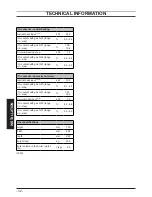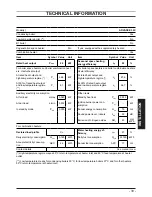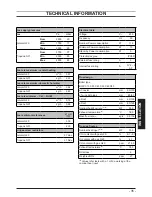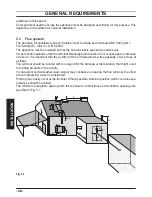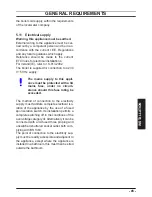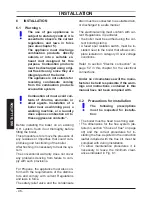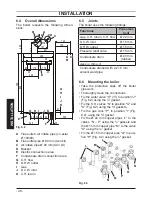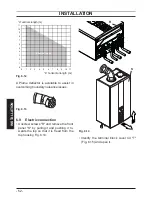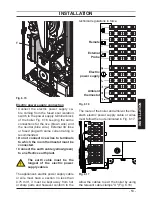
- 44 -
INST
ALLA
TION
- 44 -
INST
ALLA
TION
GENERAL REQUIREMENTS
facilitate complete filling of the system.
Expansion vessel
The appliance has an integral sealed expan
-
sion vessel to accommodate the increase of
water volume when the system is heated.
Refer to Fig. 4.5 on page 38 for its techni
-
cal data.
If the heating circuit has an unusually high wa
-
ter content, calculate the total expansion and
add an additional sealed expansion vessel
with adequate capacity.
Mains water feed: central heating
There must be no direct connection to the
mains water supply even through a non return
valve, without the approval of the Local Water
Authority.
Mains water feed: hot water supply
The domestic section of the boiler is designed
to withstand an internal domestic water pres
-
sure of 10 bar. Where it is likely that the mains
domestic water pressure may exceed 5 bar,
it is possible due to internal “water hammer”
effects that the pressure within the domestic
system can increase to a level in excess of
the 10 bar limit.
In these circumstances it is therefore recom
-
mended that a 3 bar pressure reducing valve
be fitted to the incoming mains water supply
and a mini expansion vessel installed on the
domestic circuit.
These devices will protect the boiler and the
domestic system from damage due to exces
-
sive domestic water pressure.
Filling
A method for initially filling the system and
replacing water lost during servicing must be
provided and it must comply with local water
authority regulations.
The correct method is shown in Fig. 5.5.
The temporary connection must be removed
immediately after filling.
Fig. 5.5
Temporary
connection
Control valve
Control valve
Double check valve
Supply pipe
(cold water inlet)
C.H. return pipe
The installer should ensure that no leaks ex
-
ist either inside the boiler or on the system as
frequent filling of the system could cause pre
-
mature scaling of the heat exchanger.
5.9
Domestic water
The domestic water installation must be in ac
-
cordance with the relevant recommendations
of BS 5546. Copper tubing to BS EN 1057 is
recommended for water carrying pipework
and must be use for pipework carrying potable
water.
For Ireland (IE), refer to I.S.813.2002.
5.10
Water treatment
C.H. circuit
Where a new boiler is fitted to a new system
with either plastic or copper pipes, it is impor
-
tant the system is fully flushed, on completion,
to ensure flux residues, swarf
, oils and other
installation debris is removed.
Where a new boiler is fitted to an existing sys
-
tem, it is important the debris from the existing
system is fully removed in order to ensure the
efficiency of the new appliance is maintained.
Details on flushing procedure are given in the
section "Initial filling of the system" on page
59 of this manual.
D.H.W. circuit (scale protection)
In areas where the water is ’hard’ (i.e. more
than 200 ppm total hardness as defined by BS
7593: 2006 Table 2) it is recommended that a
proprietary scale-reducing device is fitted into
Summary of Contents for ADVANCE 25C
Page 87: ......



